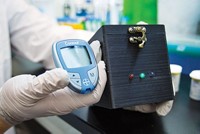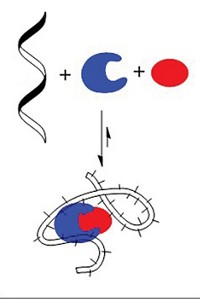Advertisement
Grab your lab coat. Let's get started
Welcome!
Welcome!
Create an account below to get 6 C&EN articles per month, receive newsletters and more - all free.
It seems this is your first time logging in online. Please enter the following information to continue.
As an ACS member you automatically get access to this site. All we need is few more details to create your reading experience.
Not you? Sign in with a different account.
Not you? Sign in with a different account.
ERROR 1
ERROR 1
ERROR 2
ERROR 2
ERROR 2
ERROR 2
ERROR 2
Password and Confirm password must match.
If you have an ACS member number, please enter it here so we can link this account to your membership. (optional)
ERROR 2
ACS values your privacy. By submitting your information, you are gaining access to C&EN and subscribing to our weekly newsletter. We use the information you provide to make your reading experience better, and we will never sell your data to third party members.
Biological Chemistry
A Personal Meter For Everything
Sensors: System allows glucose monitors to measure other analytes
by Stu Borman
July 25, 2011
| A version of this story appeared in
Volume 89, Issue 30

Researchers have devised a way to use inexpensive personal glucose meters (PGMs) to detect and measure a wide variety of substances in solution, including cocaine, biomolecules like adenosine and interferon, and metal ions like uranium.
PGMs are widely used by diabetics to monitor glucose, and some cost only $10 or so. Bioanalytical and bioinorganic chemist Yi Lu of the University of Illinois, Urbana-Champaign, and postdoc Yu Xiang have now created reagent mixtures that can be used with the meters to make the devices much more useful as sensors.
“There is real genius in the idea of leveraging the ultracheap, ultrafast, high-precision glucose-sensing capabilities of PGMs to analyze other analytes,” comments nanomaterials and chemical-sensing specialist Reginald M. Pe nner of the University of California, Irvine. “The word ‘innovative’ is often used, but it should be reserved for ideas like this one.”
In the technique, DNAs that bind specific targets are selected from large libraries. A reagent mixture, containing target-specific DNA-invertase conjugates bound to magnetic beads, is added to a solution containing a target substance. The target binds selectively to the DNA, causing the DNA to break and release invertase. The beads are then removed from solution magnetically. When sucrose is added, the freed invertase catalyzes its breakdown, releasing glucose that a PGM can measure. The amount of target in the original sample is proportional to the amount of glucose produced.
The technique could be used to quantify diverse types of analytes, from “metal ions and small organic molecules to biomolecules and even viruses or cells,” Lu and Xiang note (Nat. Chem., DOI: 10.1038/nchem.1092).
Lu envisions that kits could be developed for each such target. “We are interested in forming a company to license and commercialize the technology,” he says.
It is not that either DNA sensors or personal glucose meters “are overly surprising,” comments funtional nucleic acid expert Andrew Ellington of the University of Texas, Austin. “It is the engineering and development work done in their pairing, and showing that such a pairing can potentially have a huge impact in existing markets, that is surprising, novel, and extremely worthwhile.”
“This is a major advance in practical applications of DNA-based sensing,” says Chunhai Fan of Shanghai Institute of Applied Physics, who specializes in biosensors. “It is clearly a very wise idea that so easily breaks the long-standing bottleneck in biosensor applications. I expect that this technology will be easily expanded to detection of virtually any molecular targets with a PGM.”




Join the conversation
Contact the reporter
Submit a Letter to the Editor for publication
Engage with us on Twitter